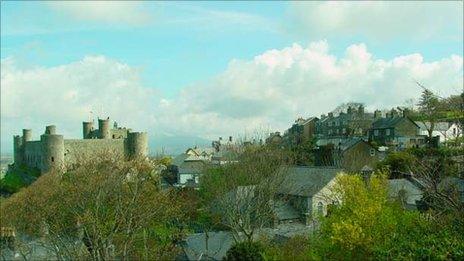Wales' footpaths blocked and neglected, walkers claim
- Published
- comments

Ramblers Cymru director Angela Charlton said the charity estimated there were issues with around 50% of Wales' public footpaths
Wales' public footpath network is in a "dreadful" state after years of neglect with stiles replaced with barbed wire in some areas, walkers claim.
Ramblers Cymru said impassable paths and missing signs had been highlighted as people attempted walks during the pandemic.
The group have called for part of the Welsh government's active travel budget to be set aside for improvements.
The government said groups could apply for grants from its Active Travel Fund.
Chair of Powys Ramblers Alan Austin said he found it "very upsetting" to see public rights of way "being neglected and disappearing".
"It's after all part of our inheritance, we owe it to our children and grandchildren to protect this network."
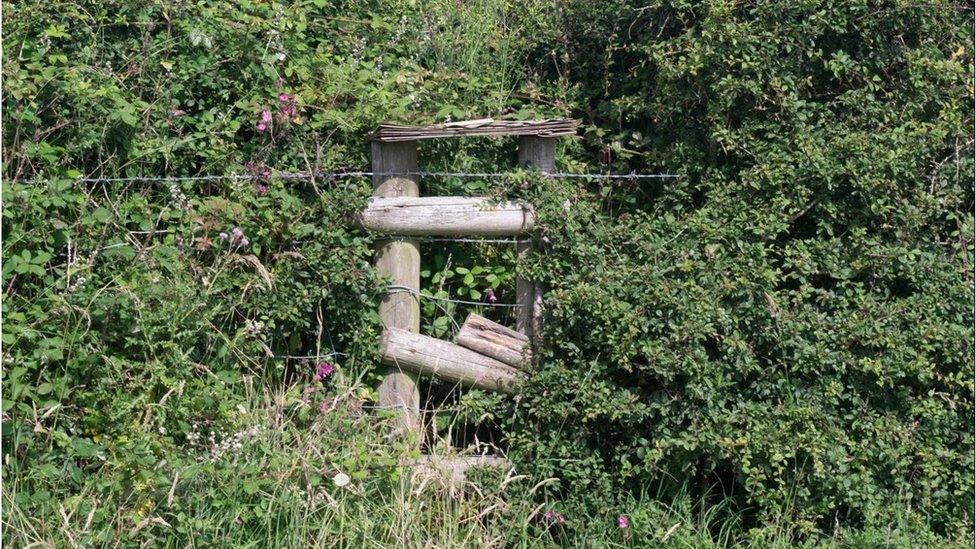
This photo was taken in Bodedern where the path was blocked with barbed wire
Powys has 9,250km (5,747 miles) of footpaths and bridleways and was "a walker's paradise", Mr Austin said.
But recent monitoring work suggested just 38% were in satisfactory condition.
"Very common problems are blockages of various descriptions, paths becoming overgrown, stiles collapsing or in some cases disappearing and being replaced by barbed wire," he said.

There was a footpath underneath the scrub at Llanddaniel Fab, Anglesey
Signage too was another major problem with the group receiving complaints from tourists on walking holidays who "won't be coming again because they couldn't find their way".
"Ultimately the responsibility for looking after them rests with the local authority and we want to see some priority given to that work," Mr Austin added.
Powys council said improving signage was an area "impacted by limited core revenue funding and officer time".
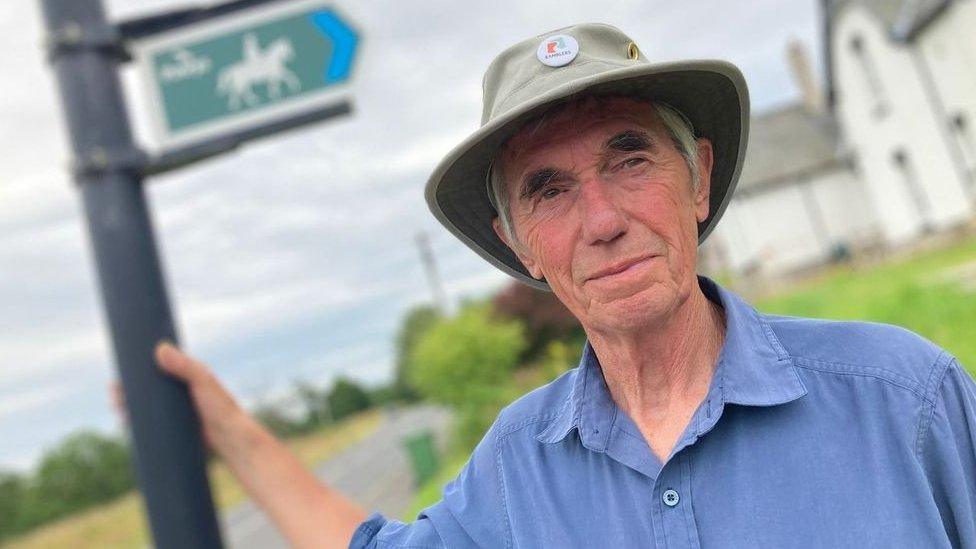
Alan Austin said he found it "very upsetting" to see public rights of way "being neglected and disappearing"
"There are approximately 12,000 individual paths in Powys and many of those will start at roadside, so this is a big task," the council said.
The authority said through its rights of way improvement plan it had been able to access Welsh government funding of £610,000 over the next three years to improve access to the countryside and was "working with communities to target these resources at local priorities".
Ramblers Cymru said improving the wider footpath network would help alleviate some of the pressures seen at so-called "honeypot sites" like Snowdon and Pen y Fan during the pandemic.
At Moel Famau, the highest hill in the Clwydian range in Flintshire, John Elwyn Williams of Clwyd Ramblers said the paths were "perfect and well sign-posted - hundreds come here as a result".
"On a weekend there's nowhere to park, people's cars line the road and it causes issues.
"What we'd like to see is all the paths open and in good condition so people can spread out a bit across north Wales," he said.
Flintshire Council said it had seen a "massive increase in users accessing the countryside since the pandemic" which was causing an "additional management burden".
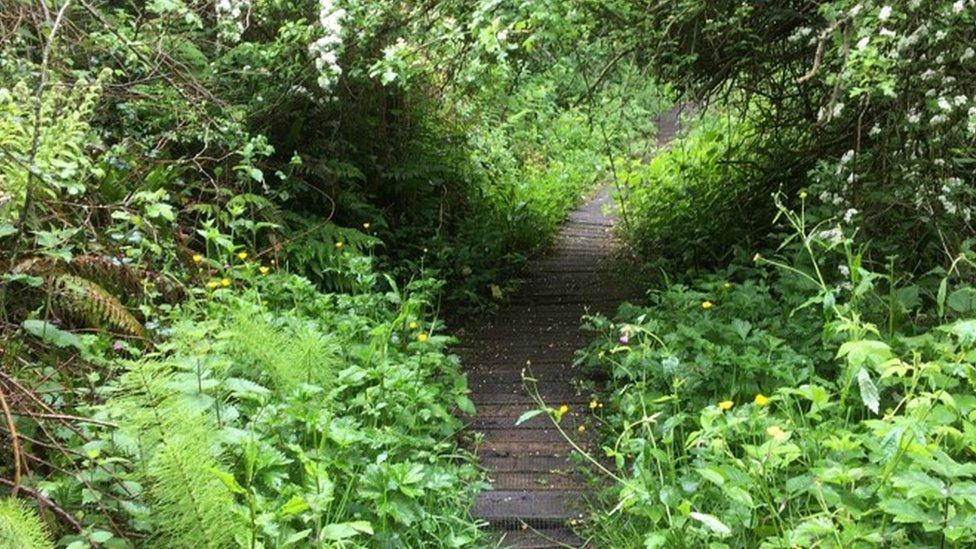
This photo shows an overgrown footpath in Caim
The council was actively working with partners such as the Ramblers Association "to provide a safe and enjoyable resource for residents and visitors alike".
Denbighshire council added that it was nearing the end of a "full survey of the whole network of paths in each community area" which would enable better targeting of resources.
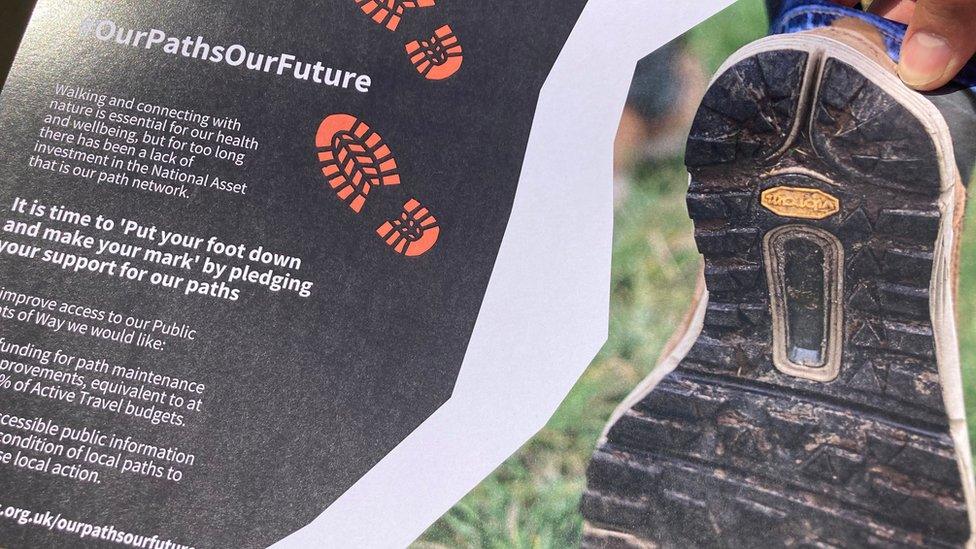
Ramblers Cymru wants to improve the state of public footpaths in its latest campaign
At the Royal Welsh Show, Ramblers Cymru director Angela Charlton said the charity estimated there were problems with about half of Wales' public footpaths, of which there are about 32,180km (20,000 miles).
"It's come to light since Covid, when we weren't able to travel very far, and were having more and more calls about paths being blocked, signposts missing and people not knowing where to go," she said.
To encourage walking and cycling, the charity said, the Welsh government should allocate 10% of its active travel fund for public rights of way, and more resources should go into monitoring the state of paths.
"The Welsh government said the path network is a national asset, so in order to look after it we need to get a full picture of what's going on," Ms Charlton added.
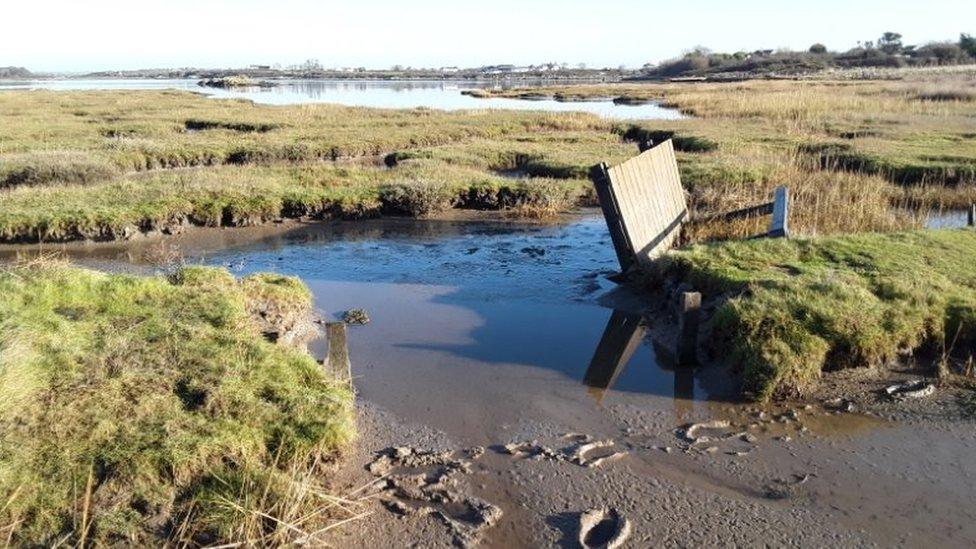
A broken footbridge at Four Mile Bridge, Anglesey
"We want to be part of the solution and are already working on projects that support volunteers and local councils to take ownership of local paths, but so much more needs to be done," she said.
The Welsh government said: "Active travel is a key priority in the Welsh Transport Strategy - Llwybr Newydd - and guides all of our transport work.
"We are committed to finding new ways that allow people to enjoy our countryside and take advantage of the many health and well-being benefits that getting outside brings.
"When local authorities identify rights of way as having the potential to facilitate active travel journeys, they can put forward bids for schemes under the Active Travel Fund."
The government added that in the last financial year it allocated "more than £70m in schemes and programmes to benefit active travel across Wales".
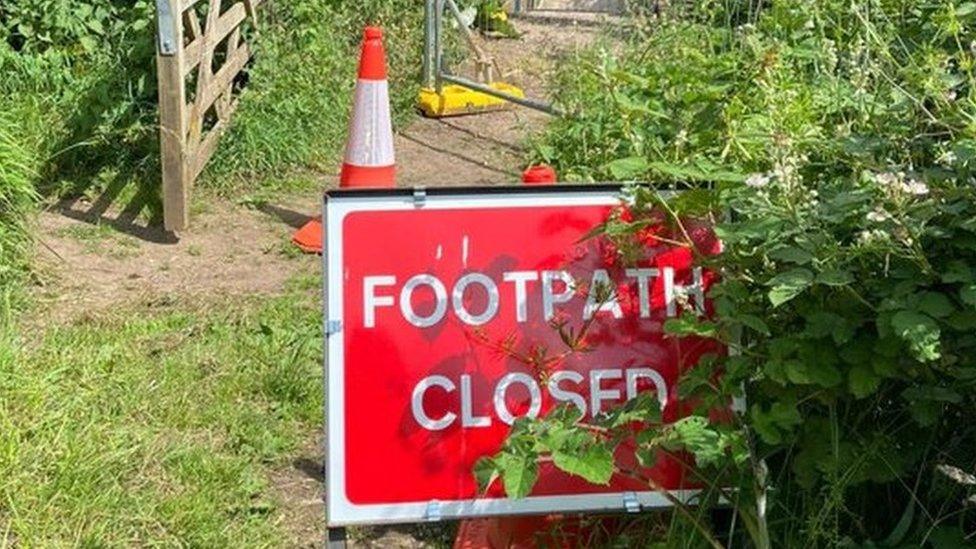
The walking group says too many footpaths are being left in a state of disrepair
In addition to this the government said it provided £2m through its access improvement grant in 2021-22 for all local authorities to improve public rights of way and access to green space.
A three-year grant, totalling £5.6m is also being opened this year to help authorities plan large-scale projects.
- Published5 May 2022

- Published2 November 2020
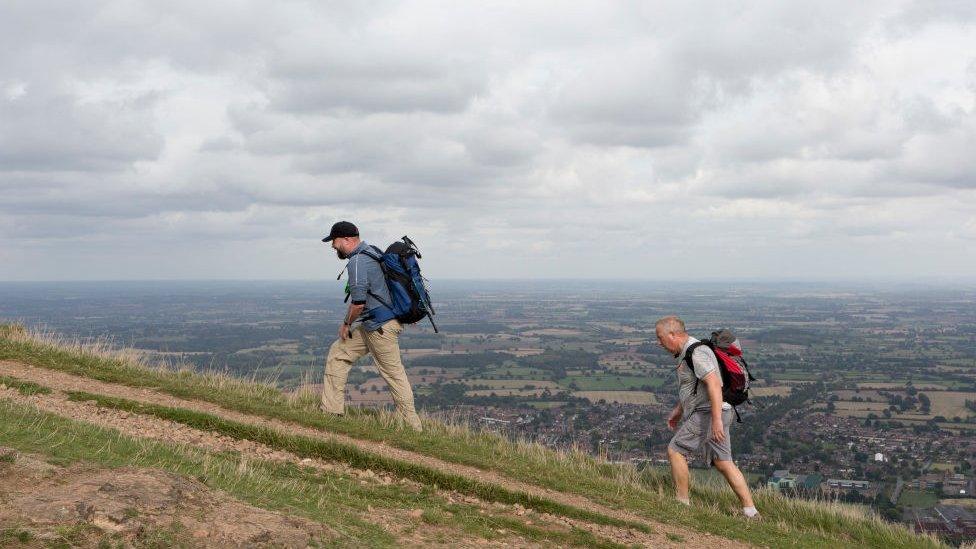
- Published19 September 2011
